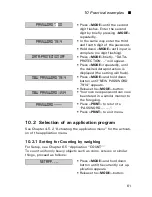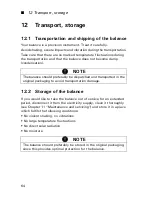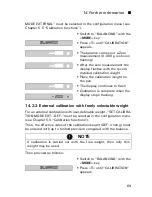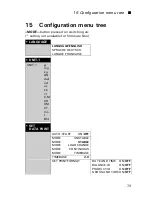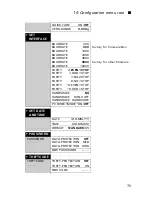
14 Further information
■
71
14.3 Notes on density determination
With the aid of the “Density” program the density of solids and liquids
can be determined (with accessories for the density determination,
see Chapter 13 “Accessories”).
For this, different types of weighing can be selected:
14.3.1 Density determination “Solid on bottom mode”
A temperature-controlled reference-liquid (water) is poured into a
bowl, placed on the scale pan and tared.
The solid is then placed into the liquid and weighed. Subsequently, the
solid is suspended so that it is still completely immersed in the water,
but no longer touches the base. It is weighed again.
From the weights, the balance determines the density of the solid.
14.3.2 Density determination “Solid in air mode”
With this weighing method, the solid is weighed with the aid of under-
floor weighing (see Chapter 3.10 “Under-floor weighing”).
The solid is then placed in the temperature-controlled reference liquid
(water) so that it does not touch the base of the bowl, but is neverthe-
less fully immersed in the water. Weighing is again carried out.
From the weights, the balance determines the density of the solid.
NOTE
For the automatic calibration by time and by time/temp. the date
and time of the balance must first be correctly set (see Chapter 5.8
“Date and time”).
The calibration can also be effected manually any time while auto-
calibration is activated.
The automatic calibration then takes place only if no weight is pla-
ced on the pan for at least five minutes.
It is recommended, that the time for the auto-calibration be set at
a time outside the normal business hours (for example, in the early
morning).





